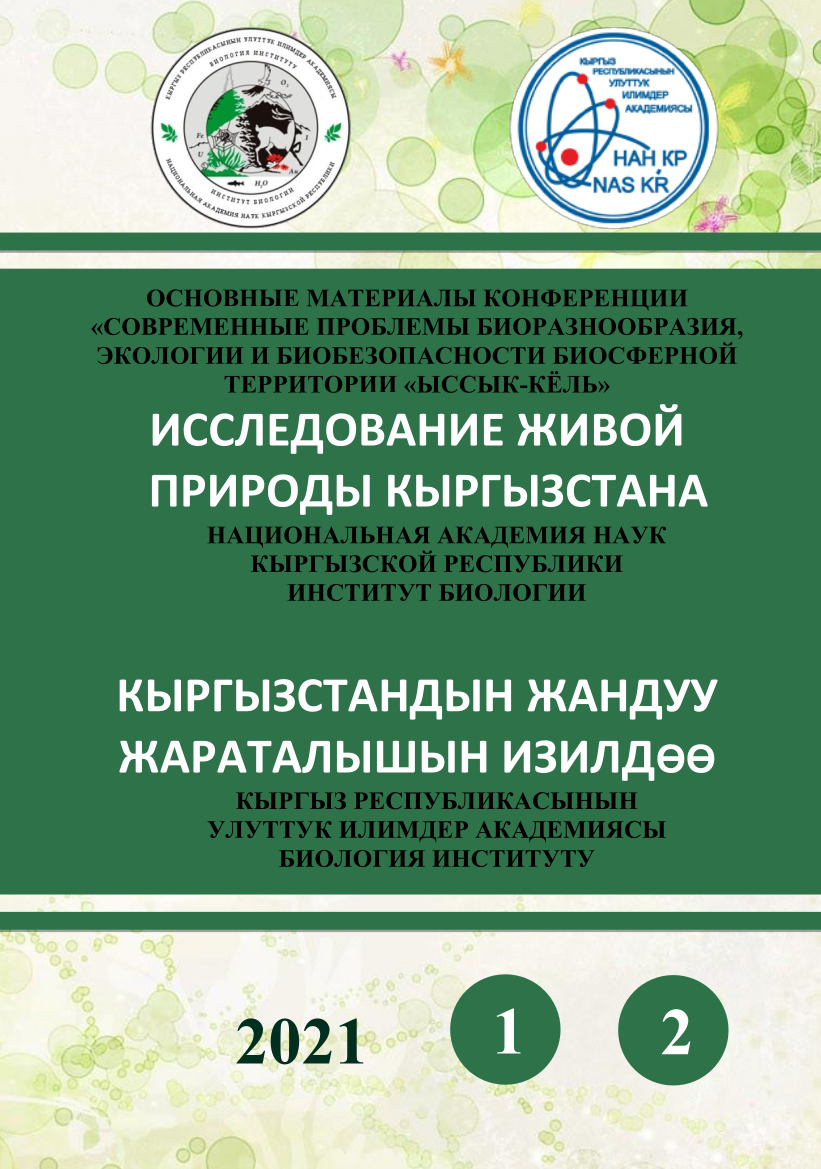MONITORING THE SPREAD OF FIRE BLIGHT AND ITS DANGER FOR THE CONSERVATION OF GENETIC RESOURCES OF LOCAL AND INTRODUCED VARIETIES OF APPLE AND PEAR TREES IN THE BIOSPHERE TERRITORY ISSYK-KUL
Keywords:
E. amylovora; molecular identification; wild and cultivated forms of Rosacea; the degree of resistance of apple varieties.Abstract
Five isolates of Erwinia amylovora as a bacterial blight causative agent have been identified from the Talgarki pear (Pyris communis) variety and two isolates from the apple cultivar (Malus domestica) grown in the villages of the Jeti-Oguz and Tup regions. Wild forms of rosaceous shrubs such as wild rose, mountain ash, hawthorn, and currant showed their natural resistance since no bacterial blight pathogens were identified among them. The screening was carried out in vitro and in vivo for apple cultivars' relative resistance to fire blight. The varieties Vkusnaya, Discovery, Karavella, and Ostankino have increased resistance to the bacterial pathogen. Our results proved the threat of a possible outbreak of this disease in wild forests soon since foci of this disease have already been found in the Tup region, located just a few kilometers from natural forests with a rich biodiversity of rosaceous shrubs and trees.
References
First national forest inventory of the Kyrgyz Republic. Manual (2000).
Wilson, B., Mills, M., Kulikov, M., & Clubbe, C. The future of walnut–fruit forests
in Kyrgyzstan and the status of the iconic Endangered apple Malus niedzwetzkyana.
Oryx, - 2019. 53(3), 415-423. doi: 10.1017/S0030605318001230
Van der Zwet, T., Orolaza-Halbrendt, N., & Zeller, W. (2012). Fireblight: History, biology
and management. St. Paul: APS Press.-2012.
Thompson S. Epidemiology of fire blight. In: Fire blight, the Disease and its Causative Agent,
Erwinia amylovora (Ed. Vanneste, J). CAB International, Wallingford (GB).- 2000.
Doolotkeldieva T., Bobushova S., Schuster C., Konurbaeva M., Leclerque A.
Isolation and genetic characterization of Erwinia amylovora bacteria from Kyrgyzstan.
Eur J Plant Pathol.-2019. 155: 677-686.
Llop, P., Bonaterra A., Peñalver J., López M. M. (2000). Development of a highly sensitive
nested-PCR procedure using a single closed tube for detection of Erwinia amylovora in
asymptomatic plant material. Applied and Environmental Microbiology. -2000.66, 2071 –2078.
Taylor, R. K., Guilford, P., Clark R. G., Hal C. N., Forster R. L. S. Detection of
Erwinia amylovora in plant material using novel polymerase chain reaction (PCR) primers.
New Zealand Journal of Crop and Horticultural Science. -2001. 29, 35–43.
Rezzonico F., Smits T. H., Duffy B. Diversity, evolution, and functionality of
clustered regularly inter spaced short palindromic repeat (CRISPR) regions in the fire blight
pathogen Erwinia amylovora. Applied and Environmental Microbiology. -2011.
,3819–3829. https://doi.org/10.1128 /AEM.00177-11.
Zhao, Y., Blumer, S.E., Sundin, G.W. Identification of Erwinia amylovora genes induced during infection of immature pear tissue. J Bacteriol.- 2005. 187: 8088-8103.

